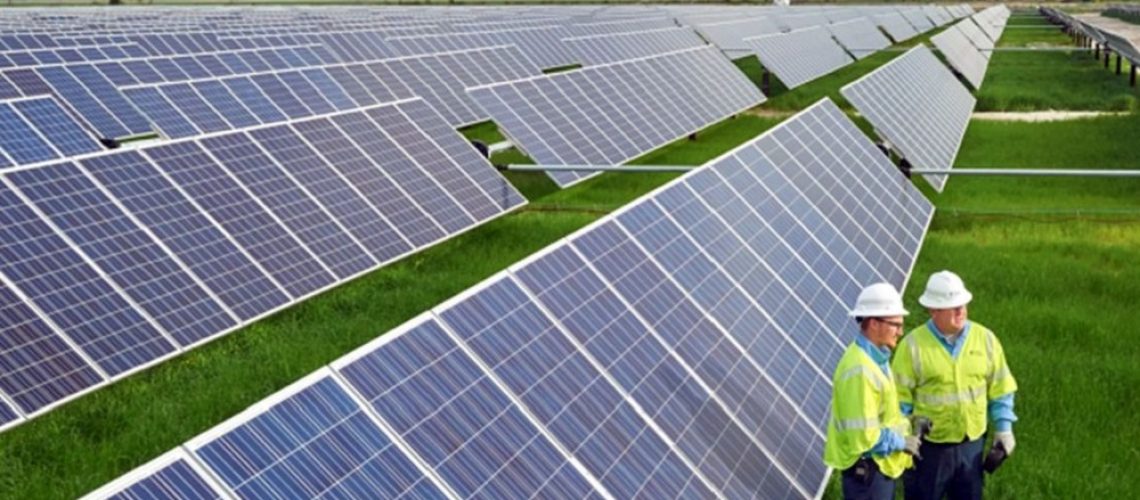By unreasonably limiting Duke’s near-term procurement of clean, low-cost solar resources, the Commission’s order will increase costs for ratepayers and delay reductions in Duke’s carbon emissions.
On December 30, 2022, the North Carolina Utilities Commission issued its long-awaited order in the Duke Energy Carbon Plan proceeding. By unreasonably limiting Duke’s near-term procurement of clean, low-cost solar resources, the Commission’s order will increase costs for ratepayers and delay reductions in Duke’s carbon emissions.
Under landmark legislation passed by the North Carolina General Assembly in 2021, the Commission was required to adopt a plan for reducing Duke’s North Carolina carbon emissions by 70% (against 2005 levels) by 2030, unless the deadline is extended by the Commission under certain allowable circumstances.
Last May, Duke filed a proposed Carbon Plan. It included several portfolios for achieving the required carbon reductions, but only one that would do so by 2030. Interested parties, including renewable energy suppliers, customer groups, environmental organizations, the North Carolina Attorney General, and the state’s consumer advocate, filed thousands of pages of comments and expert testimony on Duke’s plan. Our companies were active participants throughout the proceeding through our trade association, the Clean Power Suppliers Association.
The Commission held a three-week hearing in the fall, and on December 30 issued a 137-page order directing Duke to take a suite of 39 actions to begin reducing its carbon emissions and to continue and improve the planning process going forward.
The Commission’s order deals with a wide range of complex issues. However, at its core the order seeks to establish a comprehensive plan for retiring Duke’s expensive and dirty coal plants and replacing them with cleaner alternatives. The key question in the proceeding is what that alternative resource mix should look like to achieve 70% decarbonization in the least-cost manner while maintaining or improving system reliability, as required by the legislation.
Duke and other parties presented a variety of resource “portfolios,” which included various combinations of new solar, wind, natural gas, nuclear, battery storage and hydroelectric resources. In support of their alternative portfolios, commenters produced detailed modeling, developed by nationally recognized energy consulting firms. Many of the alternative portfolios presented could have achieved quicker emissions reductions than Duke’s, and at lower cost.
The Commission appropriately concluded that it’s not necessary to settle on a single portfolio now, and instead approved a series of steps to be taken over the next two years that are intended to make reasonable progress toward achieving the goal while keeping a wide range of portfolio options on the table.
One of the most important of those steps is the procurement of new solar resources by Duke. No party disputed that solar and solar-plus-storage are the most proven, affordable, and scalable zero-carbon generation resources available to Duke’s system. It was also undisputed that the least-cost pathway for achieving compliance with the decarbonization mandate while maintaining reliability would be to maximize solar additions in combination with other resources that provide power when the sun isn’t shining.
CPSA’s expert witness documented that ratepayers could enjoy huge savings by adding substantially more solar than proposed by Duke, including $860 million of savings in 2030 alone, assuming conservative solar costs and not accounting for Inflation Reduction Act incentives. While our modeling showed the need for natural gas additions comparable to those proposed by Duke, it demonstrated that adding more solar would avoid the need to invest in more costly and uncertain zero-carbon resources like small modular nuclear reactors (SMRs). Other intervenors, including the Attorney General and its expert witnesses, reached similar conclusions.
The Commission ignored virtually all of this evidence and agreed with Duke that that it need only procure 3,100 MW of new solar through 2024. This is a bad outcome for ratepayers and for the goal of reducing Duke’s carbon emissions in a timely fashion while maintaining reliability.
Duke claimed that the solar resources it is required to procure should be limited by the rate at which it thinks it can interconnect such resources to its system. The Commission declined to require Duke to test its ability to improve its interconnection rate by procuring and trying to interconnect more solar, arguing that doing so might require Duke to pay more for solar if prices come down over time. Leaving aside the uncertainty as to whether solar prices actually decline, this argument ignores the fact that failing to include more solar in the overall resource mix means that significantly more expensive resources will have to be procured instead.
Although the Commission claims that it hasn’t given up on achieving H.B. 951’s decarbonization mandate by 2030, its refusal to require Duke to procure more solar through 2024 almost certainly makes 2030 compliance impossible. The Commission can correct this error, save ratepayers money, and expedite the required reduction in carbon emissions by adjusting the solar procurement volumes upward this year and next, by significantly increasing solar procurement volumes in the next iteration of the Carbon Plan, and by pushing Duke to investigate ways to improve its interconnection performance. We urge it to do so.
Steven Levitas and Tyler Norris are co-chairs of the Clean Power Suppliers Association. Levitas is Senior Vice-President for Regulatory and Government Affairs at Pine Gate Renewables. Norris is a Vice President of Development at Cypress Creek Renewables.



